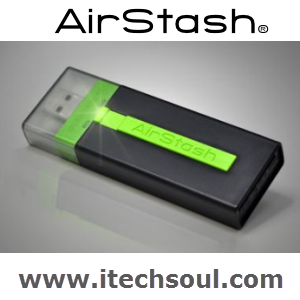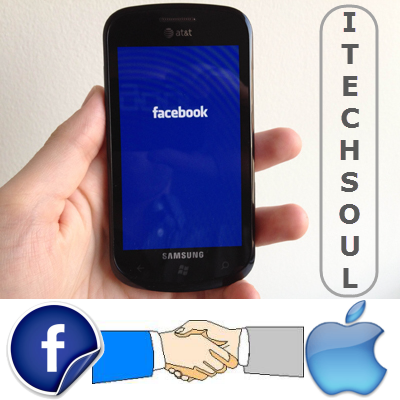Now a day communication is an important part of human life. So need for better technology to support communication to growing continuously. This is the basis of the worldwide success of mobile telephone and computers. Peoples can easily connect to others in small cost have voice conversations with their family on the other side of the planet. Also you can sending video and audio messages to any place on earth. For your knowledge and information I am writing all communication and computer network related abbreviations.
List of All Abbreviations:
- 3GPP: Third Generation Partnership Project
- AAA: Authentication, Authorization, and Accounting
- ADSL: Asymmetric Digital Subscriber Line
- AIPN: All-IP Networks
- AN: Ambient Networks
- API: Application Programming Interface
- BAN: Body Area Network
- CA: Certification Authority
- CAN: Community Area Network
- CBB: Counter-Based Broadcasting
- CMI: Context Management Interface
- CMN: Context Management Node
- CoA: Care-of Address
- CPFP: Certified PN Formation Protocol
- CRL: Certificate Revocation List
- CS: Certificate Server
- DA: Directory Agent
- DAD: Duplicate Address Detection
- DB: Database
- DCF: Distributed Coordination Function
- DHCP: Dynamic Host Configuration Protocol
- DHT: Distributed Hash Table
- DME: Device Management Entity
- DNA: Detecting Network Access
- DNS: Domain Name System
- DoS: Denial-of-Service
- DSDV: Destination-Sequenced Distance-Vector Routing
- DSL: Digital Subscriber Line
- DSR: Dynamic Source Routing
- DYMO: Dynamic MANET On-Demand Routing Protocol
- ECC: Elliptic Curve Cryptography
- ER: Edge Router
- ESP: Encapsulating Security Payload
- ETT: Expected Transmission Time
- ETX: Expected Transmission Count
- EWMA: Exponentially Weighted Moving Average
- FMIPv6: Fast Handover for Mobile IPv6
- FP6: Sixth Framework Programme
- FSP: Flooding with Self-Pruning
- GENA: General Event Notification Architecture
- GLL: Generic Link Layer
- GPS: Global Positioning System
- GSM: Global System for Mobile Communication
- HDMI: High Definition Multimedia Interface
- HI: Host Identifier
- HIP: Host Identity Protocol
- HMIPv6: Hierarchical Mobile IPv6
- i3: Internet Indirection Infrastructure
- ICMP: Internet Control Message Protocol
- ICT: Information and Communication Technology
- IEEE: Institute of Electrical and Electronic Engineers
- IETF: Internet Engineering Task Force
- IKE: Internet Key Exchange
- INR: Intentional Name Resolver
- INS: Intentional Naming System
- IP: Internet Protocol
- IPC: Inter-Process Communication
- IPsec: Internet Protocol Security
- IrDA :Infrared Data Association
- ISM: Industrial, Scientific, and Medical
- ISTAG: Information Society Technologies Advisory Group
- IST: Information Society Technology
- LLAL: Link Layer Adaptation Layer
- LLC: Location Limited Channel
- LQA: Link Quality Assessment
- LTE: Long Term Evolution
- MAC: Medium Access Control
- MAC: Message Authentication Code (Chapter 9)
- MAGNET: My Adaptive Global Net
- MANET: Mobile Ad Hoc Network
- MIH: Media Independent Handover
- MMS: Multimedia Messaging Service
- MOPED: Mobile Grouped Device
- MPR: Multipoint Relay
- MR: Mobile Router[adsense]
- MSMP: MAGNET Service Management Platform
- MTM: Medium Time Metric
- MTU: Maximum Transmission Unit
- NAPT: Network Address Port Translation
- NAT: Network Address Translator
- NEMO: Network Mobility
- NEXWAY: Network of Excellence in Wireless Applications and Technology
- NFC: Near Field Communication
- NHDP: Neighborhood Discovery Protocol
- OLSR: Optimized Link State Routing Protocol
- P2P: Peer-to-Peer
- PAC: Proximity Authenticated Channel
- PAN: Personal Area Network
- PC: Personal Computer
- PDA: Personal Digital Assistant
- PDE: Personal Distributed Environment
- PFS: Prioritized Flooding with Self-Pruning
- PGP: Pretty Good Privacy
- PKI: Public Key Infrastructure
- PMH: Personal Mobile Hub
- PN: Personal Network
- PNCA: PN Certification Authority
- PNDB: Personal Network Database
- PNDS: PN Directory Service
- PNF: PN Federation
- PNNT: Personal Node Neighbor Table
- PNP2008: Personal Network Pilot 2008
- PNPA: PN Provisioning Administration
- P-PAN: Private Personal Area Network
- PRNET: Packet Radio Network
- PVR: Personal Video Recorder
- QoS: Quality of Service
- ROAM: Robust Overlay Architecture for Mobility
- RSSI: Received Signal Strength Indication
- RTS: Request to Send
- RVS: Rendezvous Server
- SCMF: Secure Context Management Framework
- SDN: Service Directory Node
- SIM: Subscriber Identity Module
- SLP: Service Location Protocol
- SMN: Service Management Node
- SMS: Short Message Service
- SNR: Signal to Noise Ratio
- SOAP: Simple Object Access Protocol
- SPI: Security Parameter Index
- SSDP: Simple Service Discover Protocol
- STUN: Session Traversal Utilities for NAT
- TCP: Transmission Control Protocol
- TEP: Tunnel Endpoint
- TLS: Transport Layer Security
- TTP: Trusted Third Party
- TURN: Traversal using Relay NAT
- UCL: Universal Convergence Layer
- UDP: User Datagram Protocol
- UIA: User Information Architecture
- UIP: Unmanaged Internet Protocol
- UML: Unified Modeling Language
- UMTS: Universal Mobile Telecommunications System
- UPN: Universal Personal Networking
- UPnP: Universal Plug and Play
- USB: Universal Serial Bus
- UWB: Ultra-Wide band
- VoIP: Voice over IP
- VPN: Virtual Private Network
- WAN: Wide Area Network
- WCETT: Weighted Cumulative ETT
- WLAN: Wireless Local Area Network
- WPA: Wireless Protect Access
- WPAN: Wireless Personal Area Network
- WRP: Wireless Routing Protocol
- WSI: Wireless Strategic Initiative
- WSN: Wireless Sensor Network
- WWI: Wireless World Initiative
- WWRF: Wireless World Research Forum
- XML: Extensible Markup Language
A simple thanks will not take time,but it will surely encourage me ……..




